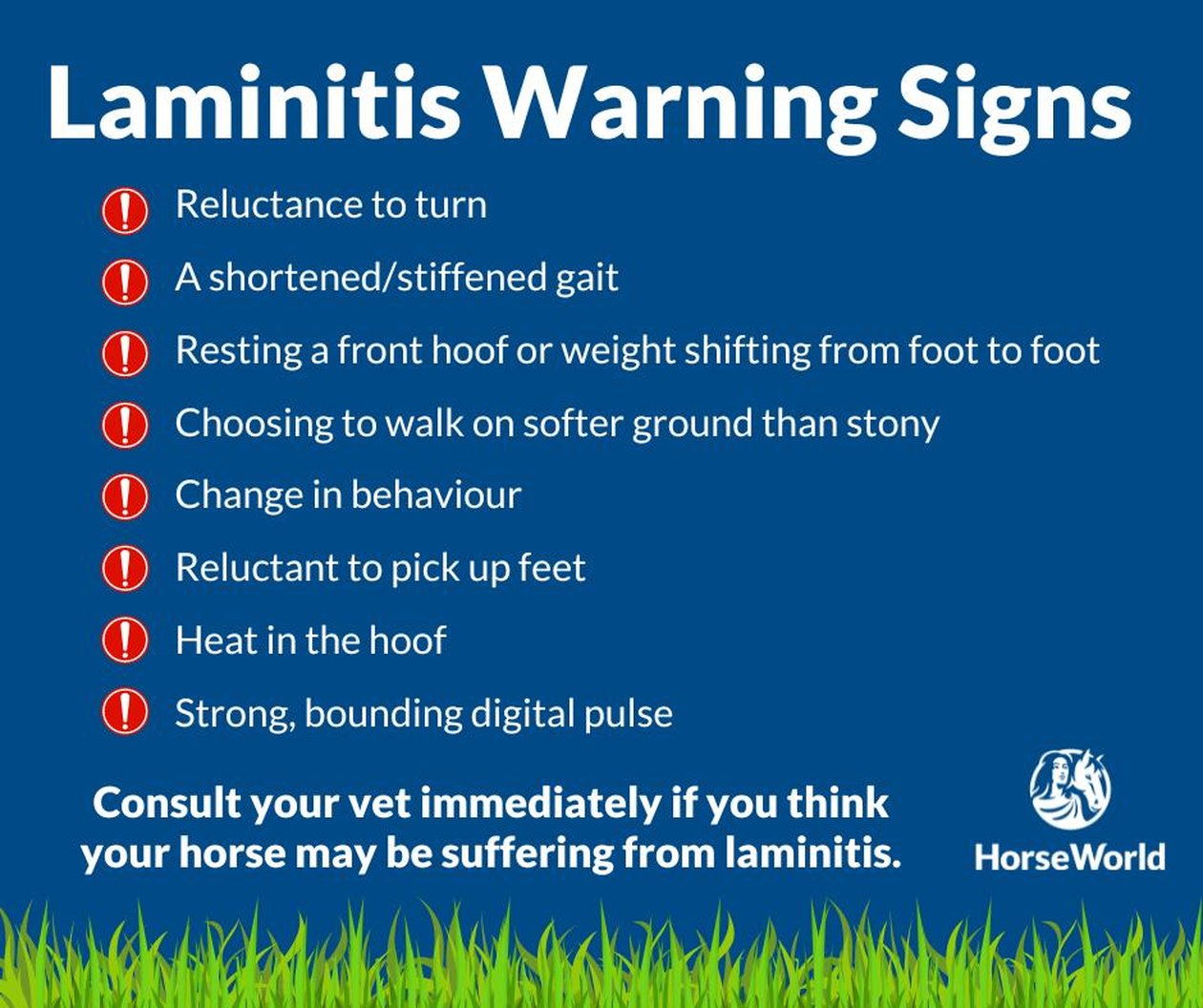Did you know that grass can actually be harmful or even lethal for some horses?
It may sound surprising, but during periods of rapid grass growth, particularly in spring, grass contains higher levels of starch and sugar. When horses consume this rich grass, it can disrupt the balance of bacteria in their digestive system, potentially triggering a painful condition called Laminitis.
Laminitis is a common, extremely painful, and often frequently recurring condition affecting the feet of horses, ponies, and donkeys. Once a horse has suffered from Laminitis, they are at an increased risk of developing it again, making prevention absolutely crucial.
The most common causes of Laminitis are:
🌱 Diets high in sugar
🌱 Excessive concussion or overloading (for example, hard work on hard ground)
🌱 Hormonal disorders such as Equine Metabolic Syndrome (EMS) and PPID/Cushings
🌱 Weight gain
This is why it is particularly important that we don’t allow our ponies to over indulge when grazing. There are many ways to manage the intake of grass including; reduced turn out, strip grazing, track systems, diets, grazing muzzles and specific living environments. There is less starch and sugar in older grass, rather than short and stressed grass, so careful management of pasture can also help control the risk of laminitis.

At HorseWorld we try to promote methods that maintain as much freedom and natural environment as possible for those prone to Laminitis. With over 100 horses, ponies and donkeys on site at one time, we have to plan the use of our paddocks meticulously based on the horses' temperaments, backgrounds and medical conditions. We have had great success in utilising equine track systems to reduce grass intake, but still allow the ponies access to stimulating outside space and equine friends.
Our team work exceptionally hard to ensure the horses' diets are managed appropriately, and carry out daily welfare checks to ensure we keep on top of any symptoms so changes are made as soon as possible.
Horses that are prone to weight gain may be kept in pasture that has a hill to encourage increased effort, and we may space out items such as hay, salt licks and water to encourage more movement. For example on one of our track systems the hay is placed at the top of the hill, and the water source is as the bottom. This encourages the horses to move more but it is essential that the horses are fit and sound enough for this, and you make adjustments in very hot weather.
Prevention of laminitis is essential whenever possible as once a horse has suffered from it they are at an increased risk of developing it again. Laminitis is a medical emergency. It is one of the most painful conditions your horse can suffer.
Please consult your vet immediately if you think your horse may be suffering from Laminitis.
Need more help?
Your vet should always be the first port of call as they will be familiar with your specific horse's condition and needs. If your horse is actively suffering from Laminitis, the vet will need to examine them to give relevant advice and pain relieving medication. If appropriate, your horse may need X-rays and/or blood tests to establish the full picture.
If you are hoping to prevent Laminitis and need more advice, our welfare and rehoming teams have a wide knowledge and experience of caring for horses prone to Laminitis. If you would like to ask any questions, please don’t hesitate to get in touch.
📞 Tel: 01275 893022 (Welfare & Rehoming)
If your horse is a rehomed HorseWorld horse, you may prefer to speak to the rehoming team.
